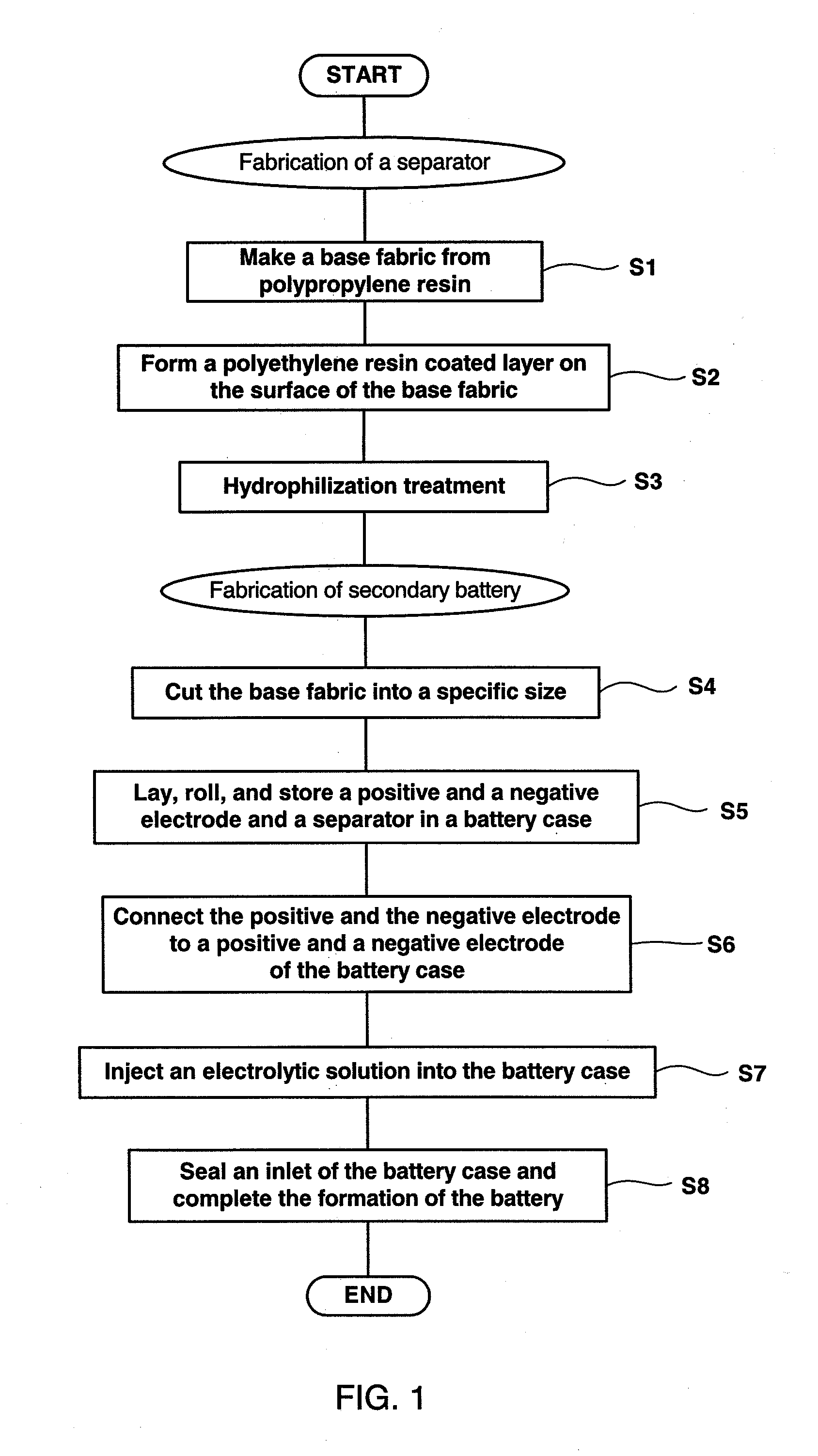Battery separator and secondary battery
- Summary
- Abstract
- Description
- Claims
- Application Information
AI Technical Summary
Benefits of technology
Problems solved by technology
Method used
Image
Examples
working example 1
[0049]A polyethylene (hereafter, referred to as PE) emulsion solution (e.g., “CHEMIPEARL M200” made by Mitsui Chemicals, Inc. is available. CHEMIPEARL is a registered trademark of Mitsui Chemicals, Inc.) is applied to a spunbonded nonwoven fabric made of polypropylene (hereafter, referred to as PP) 53 g / m2 in fabric weight and 125 μm in thickness using a dip method so that the coating rate is 0.1 wt %, and the resulting fabric is dried at 125° C. and fixed, and then subjected to PE coating. Afterwards, the resulting fabric is subjected to a corona discharge treatment with a treatment density of 220 kW / m2 / min so as to be hydrophilic, resulting in a completed battery separator.
working example 2
[0050]A battery separator is fabricated in the same manner as in working example 1 except that the coating rate of the PE emulsion solution is changed to 1 wt %.
working example 3
[0051]A battery separator is fabricated in the same manner as in working example 1 except that the coating rate of the PE emulsion solution is changed to 3 wt %.
PUM
 Login to View More
Login to View More Abstract
Description
Claims
Application Information
 Login to View More
Login to View More - R&D
- Intellectual Property
- Life Sciences
- Materials
- Tech Scout
- Unparalleled Data Quality
- Higher Quality Content
- 60% Fewer Hallucinations
Browse by: Latest US Patents, China's latest patents, Technical Efficacy Thesaurus, Application Domain, Technology Topic, Popular Technical Reports.
© 2025 PatSnap. All rights reserved.Legal|Privacy policy|Modern Slavery Act Transparency Statement|Sitemap|About US| Contact US: help@patsnap.com


